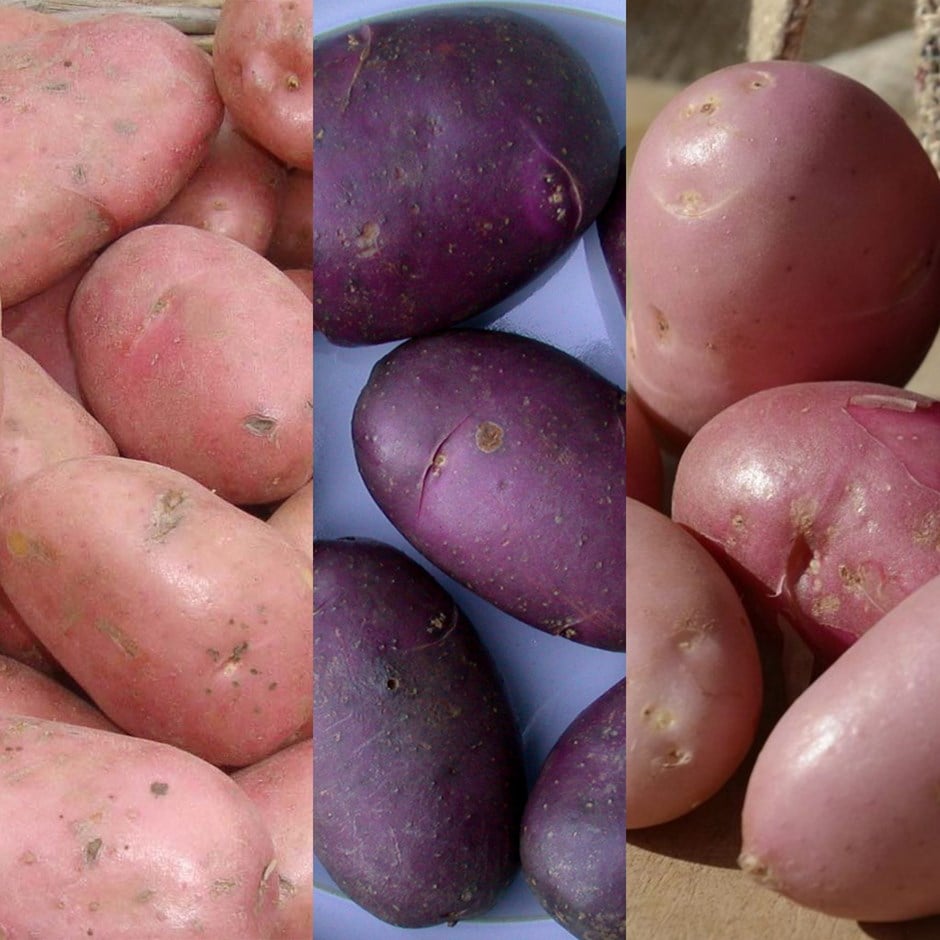This collection contains 30 blight resistant potatoes bred by Sarpo, 10 each of the following:
‘Sarpo Mira’: A high yielding, red-skinned late maincrop variety (pronounced Sharpo), it produces a good amount of weed-smothering foliage, but it is the potatoes natural resistance to blight that makes it stand out from the crowd. It's a good all rounder in the kitchen and has a floury texture that is great for baking, roasting and making chips. It also has good crop yields and stores well so the good harvest potential will mean you do not have to eat them all at once.
‘Blue Danube’: Purple-black stems and a dark shiny foliage and spectacular blue-skinned tubers of good shape and skin finish. It is an early maincrop with medium foliage-blight resistance and good tuber-blight resistance. It also has good resistance to a number viruses. The flesh is bright white and of medium dry matter content. Growers experimenting with this variety always want more - and many claim it as their favourite roast potato!
‘Sarpo Una’: The first 'second early' in the Sarpo range, this disease-resistant variety can be harvested and used as a waxy salad potato from mid-June onwards. Otherewise, leave it in the ground and it will go on to produce a heavy crop of larger potatoes, which are excellent for baking. Ideal for smaller gardens, this versatile potato can be grown in pots or bags, and when harvested, it has a pure white flesh with a subtle flavour.





